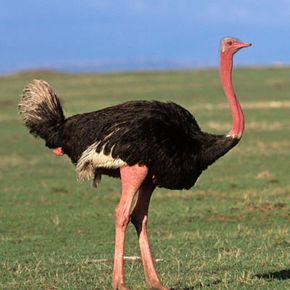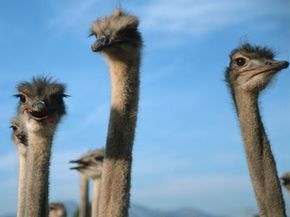Key Takeaways
- Ostriches are the largest birds in the world, standing up to 9 feet (2.8 meters) tall and weighing as much as 320 pounds (145 kg).
- They are flightless but can run at speeds up to 45 mph (72 km/h), using their powerful legs to escape predators.
- Ostriches lay the largest eggs of any living land animal, with each egg weighing about 3 pounds (1.4 kg).
The ancient Roman encyclopedist and philosopher Pliny the Elder once wrote that the ostrich, being profoundly stupid, sticks its head into a bush at the first sign of danger and considers itself invisible. Here's the truth about this magnificent, maligned bird.
To dispel the ancient libel, ostriches do not bury their heads when faced with danger--a species that did so would hardly be able to survive for more than 120 million years. They do, however, stretch their long necks flat on the ground when they sleep; from a distance, it can look as though their heads are buried.
Advertisement
Of the three main varieties of ostriches, only the African black ostrich (Struthio camelus domesticus) is found in captivity. They are farmed for meat, leather, and feathers in at least 50 countries and just about all climatic conditions, from Alaska to equatorial Africa. Ostriches have the best feed-to-weight ratio gain of any farmed land animal in the world and produce the strongest commercially available leather.
The ostrich's eyes are about the size of billiard balls. They take up so much room in the skull that the ostrich's brain is actually smaller than either one of its eyeballs. This may be why the ostrich, despite its tremendous running speed, is not very good at eluding predators: It tends to run in circles.
Find more ostrich facts on the next page.
Advertisement

